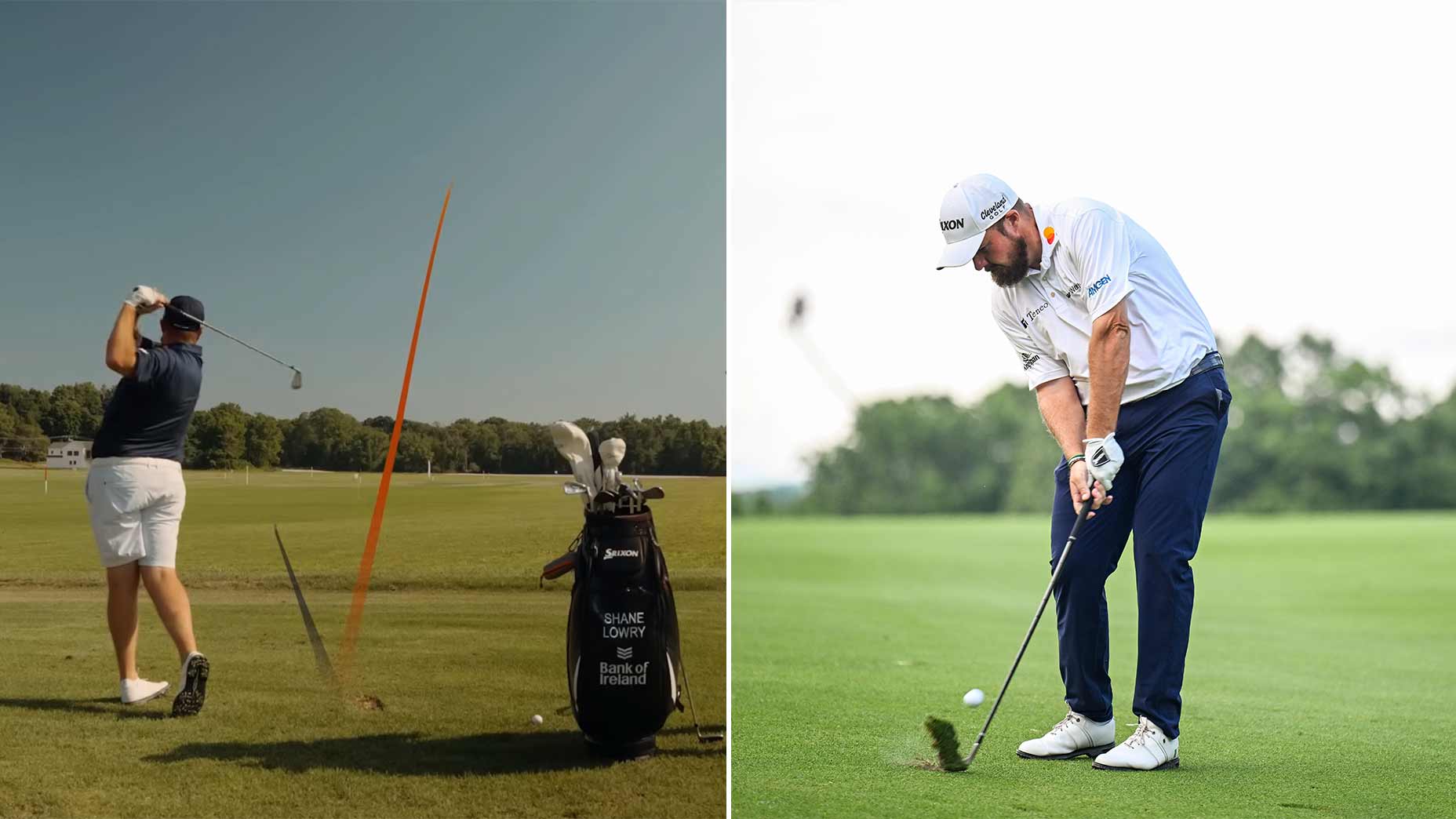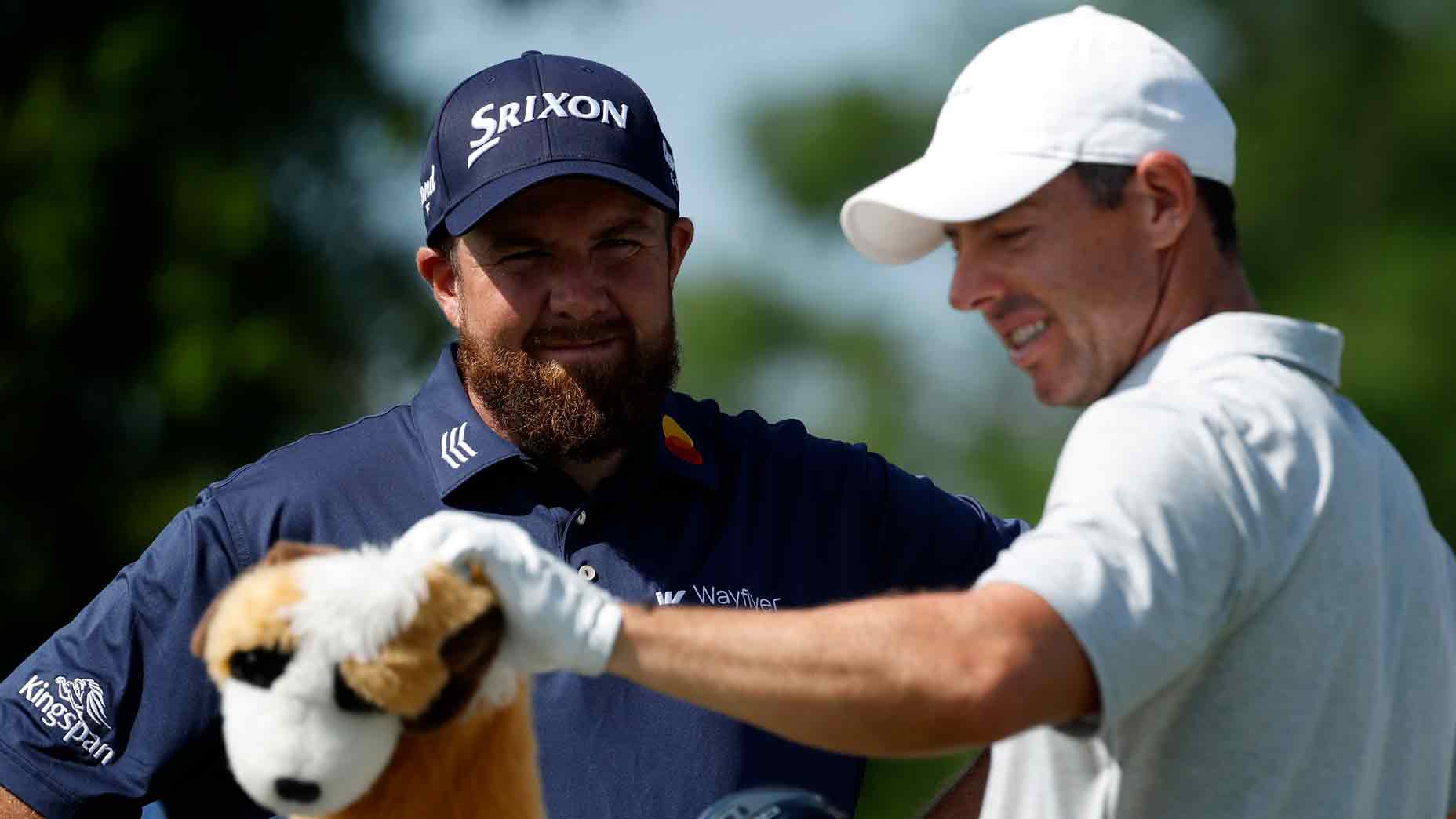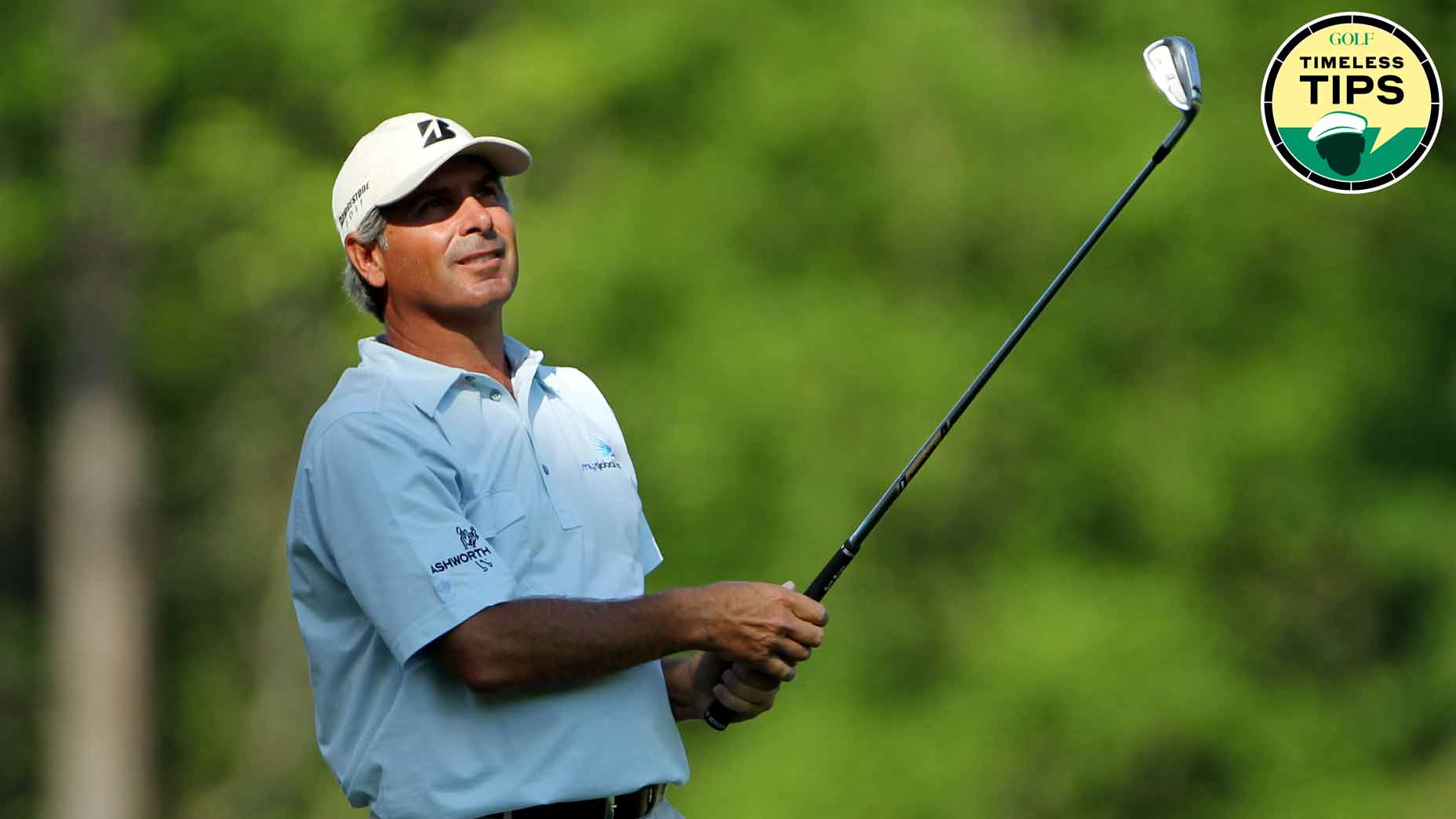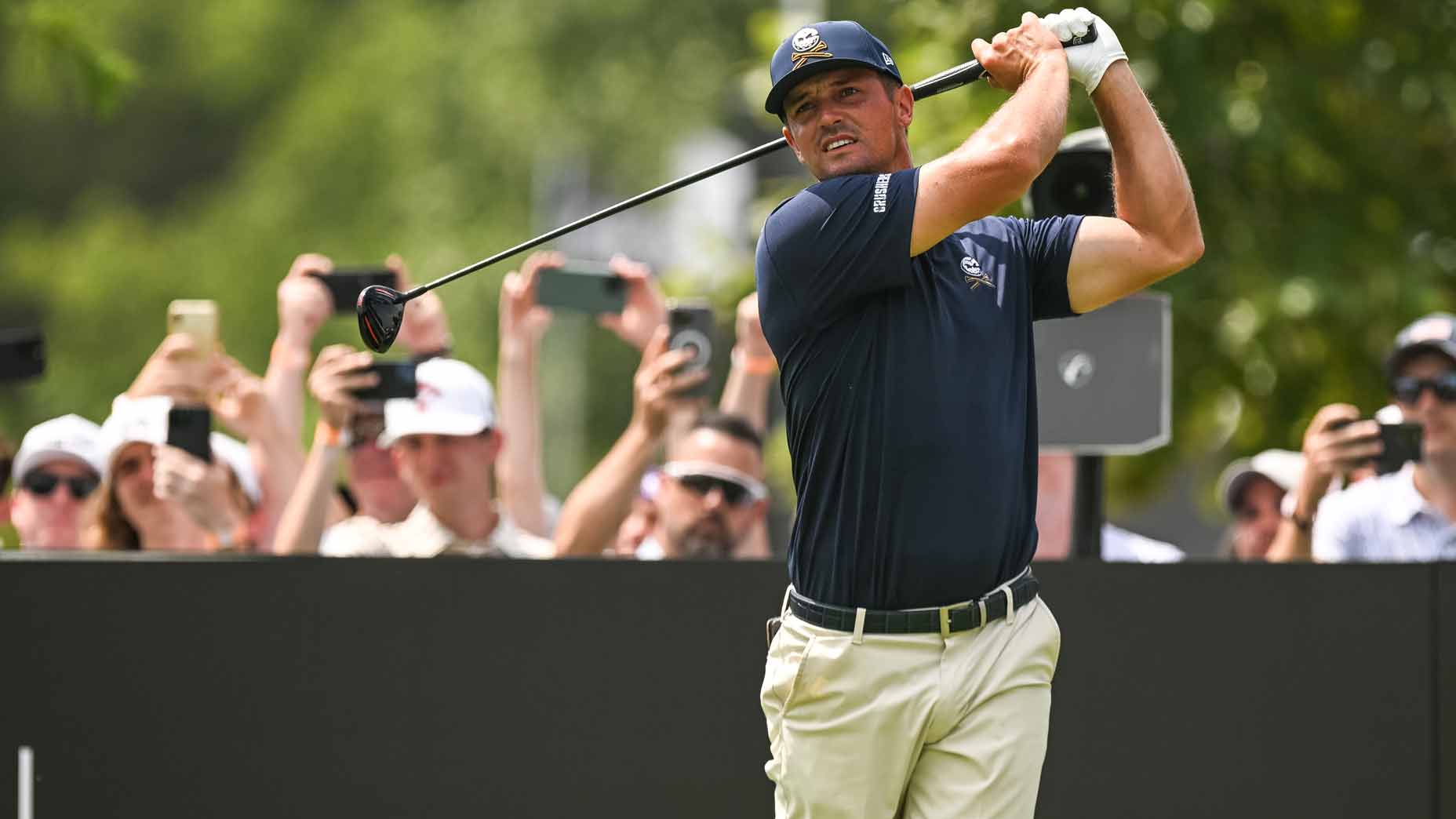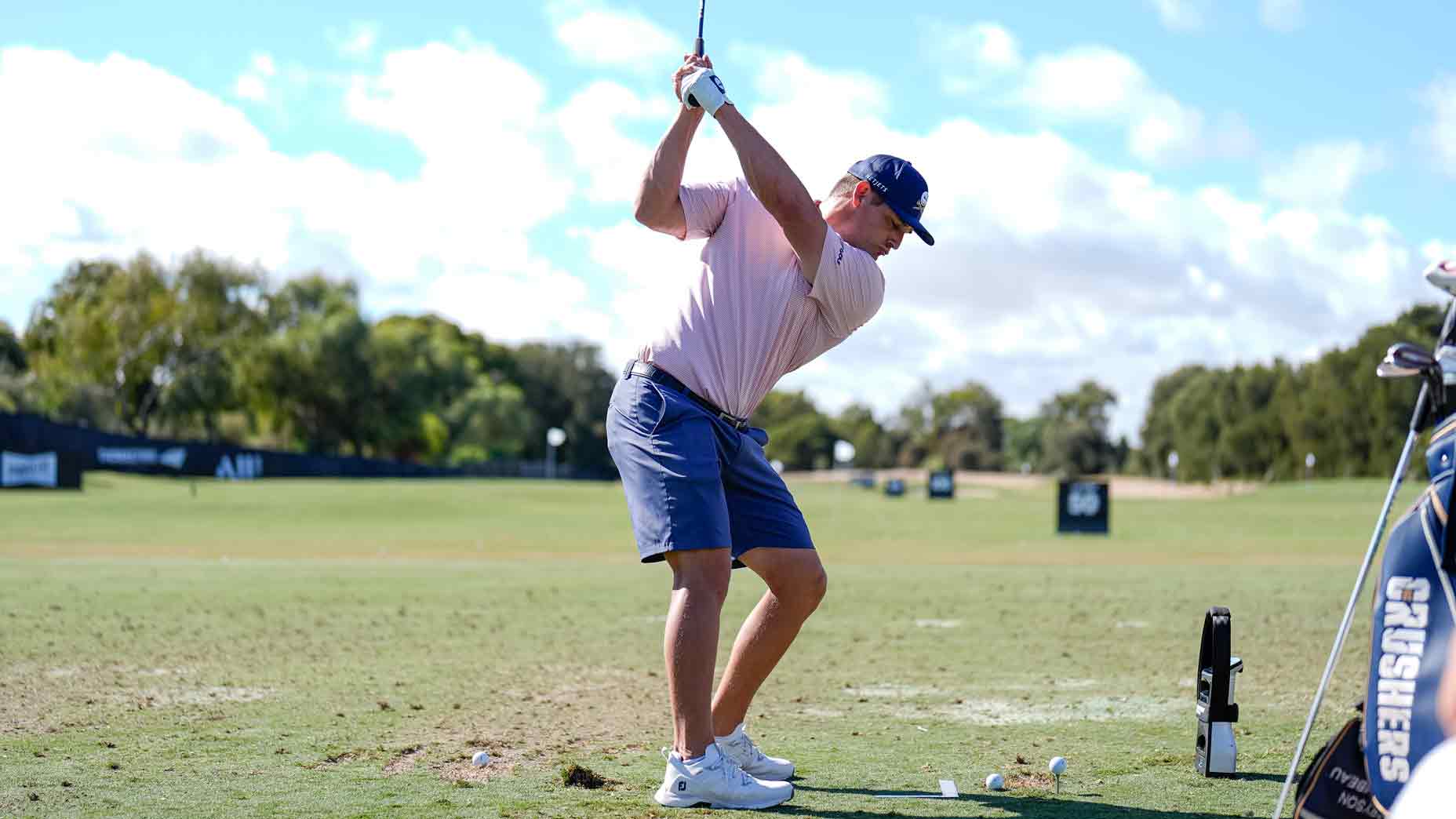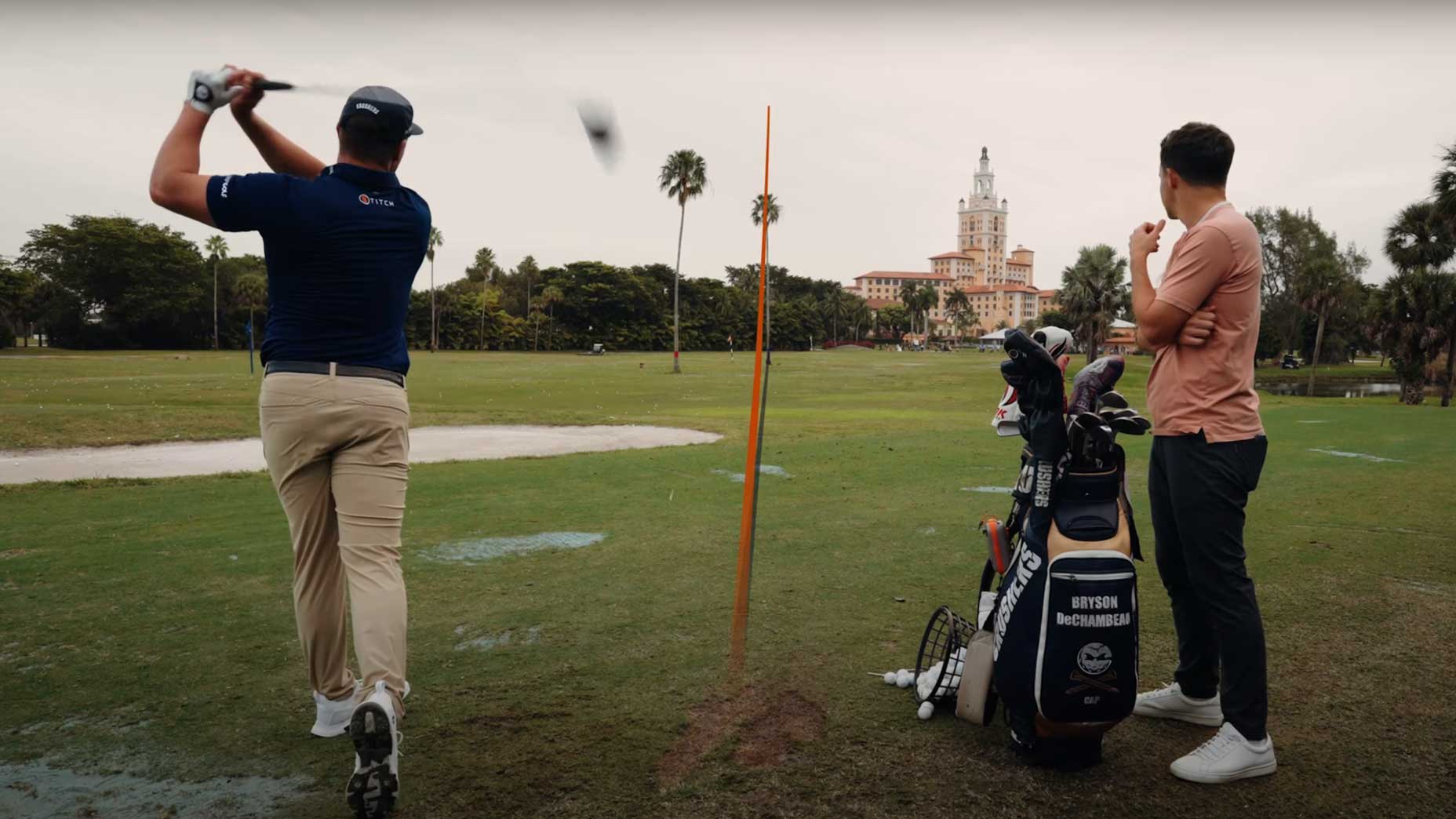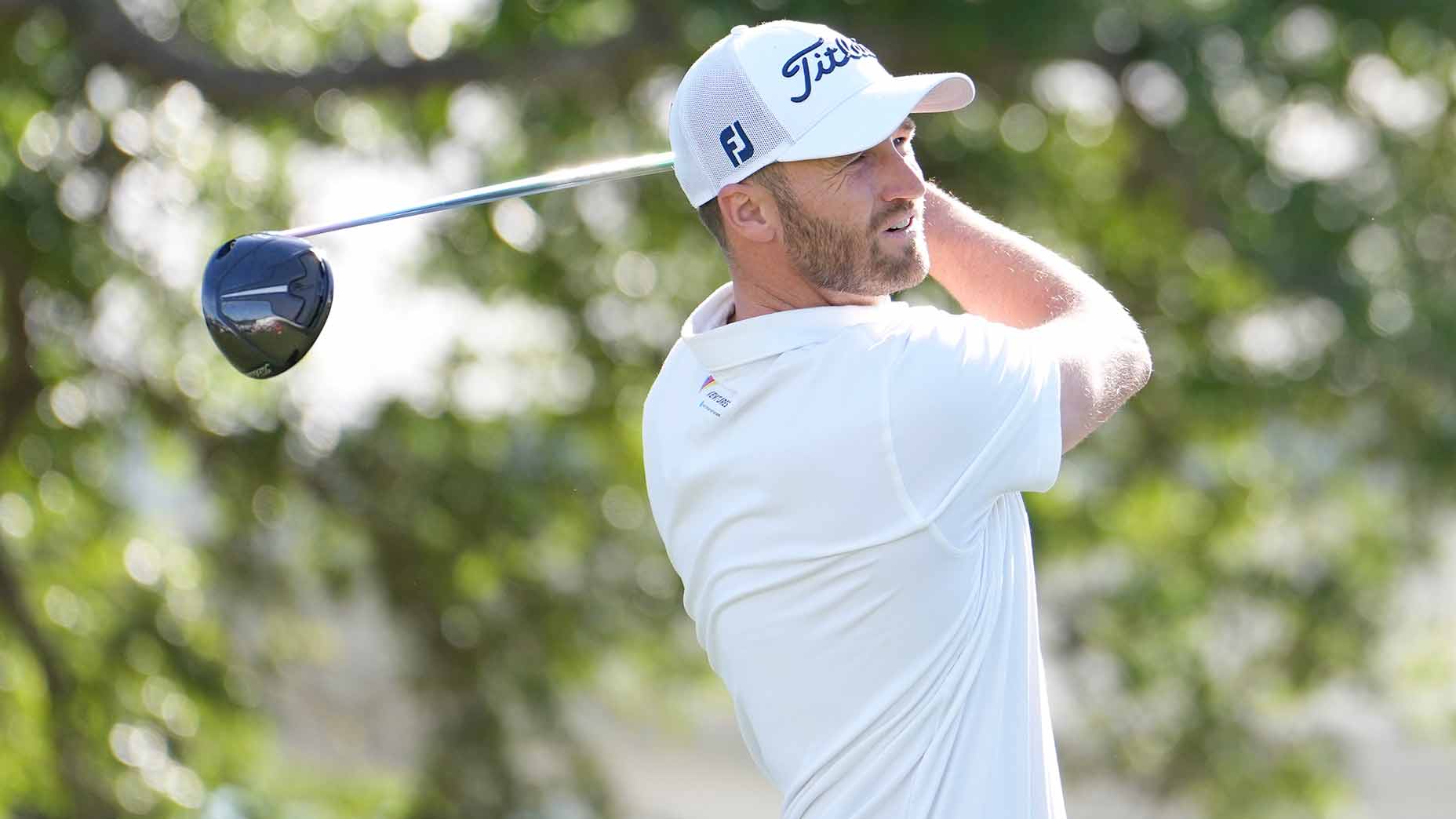Fred Couples taught me 5 things in 27 minutes. Here they are
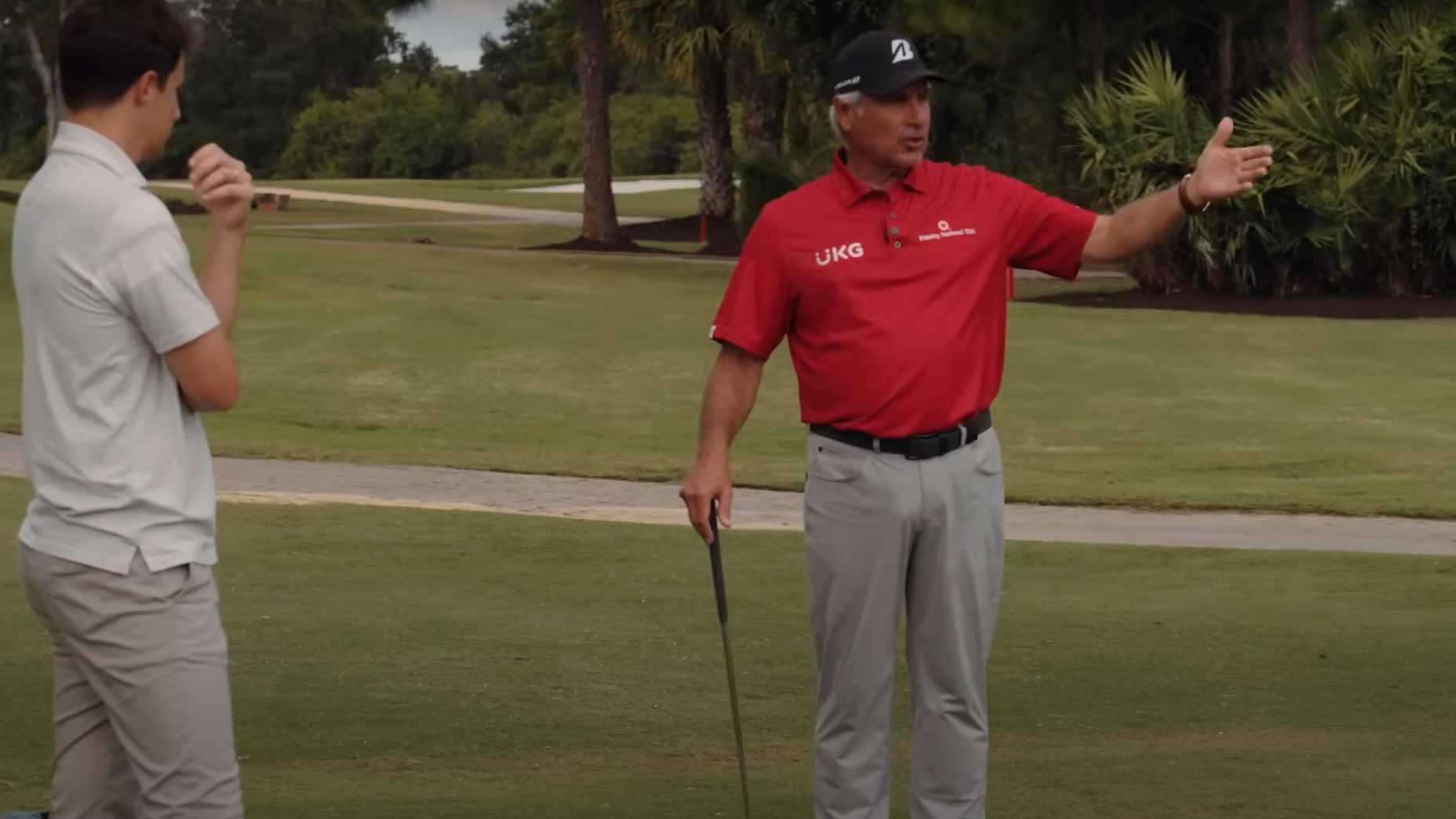
Fred Couples is a guest on this month's Warming Up.
Darren Riehl
On a Wednesday afternoon some weeks ago, Fred Couples stood beside a practice green at the Cape Club of Palm City and leaned on a lob wedge.
This wasn’t the initial plan. We’d talked our way into a time slot at Bridgestone Golf’s 2024 photoshoot, specifically dreaming of Couples walking us through his pre-round process for a silky-smooth episode of our series, “Warming Up,” which typically takes place on a driving range. But after a cross-country flight, Couples didn’t think it wise to test his balky back by running all the way through his bag. A range session was out.
For most subjects, that would be something of a dealbreaker. But Couples’ golf game isn’t actually the main event. It’s his vibe. It’s his tempo. It’s his rhythm. And he was willing to share as much of that as his body would allow. So he grabbed a wedge and a bucket of balls and joined me by the chipping green. What follows is about a half-hour of Fred Couples, interrupted slightly too often by yours truly as he talks testing grain, texting Tiger, taking on Team Europe, transcending time and more.
That video is below or on YouTube here.
And here five things I learned from Couples along the way.
1. He doesn’t “pick a spot” when he chips
I’ve always found it interesting when pros will talk about picking their landing spot when chipping. On one hand, it makes sense that the best in the world can visualize with great precision how their shot will play out. On the other hand, chipping is not billiards. There are different trajectories and contacts and spin rates and picking an exact spot seems like it could be paralyzing, too.
If you’re looking for permission to ignore the landing spot, Couples is your guy. For longer pitches, he says he doesn’t bother.
“Some people will say I need to fly it to a certain spot,” he said as he begins to warm into the session. “I’m not that guy. I’m focusing on the flag. And here in Florida, I can tell I’m a little into the grain, so it should stop a little bit quicker, and [here he hits one that checks but skitters a respectable eight feet past the flag]. I’ve done it for 40 years so I kinda know.”
So take comfort in knowing that it’s OK to just “kinda know.” Even if you might not know quite as well as he does.
2. Easy shots are hard. And hard shots are easy
“A lot of it is tension,” Couples says.
Not all short-game shots are created equal, and he says he’s noticed something interesting about himself over the years: He makes the easy shots look hard and the hard shots look easy.
The first several shots he hits are to a wide-open hole location with plenty of green to work with. Couples has sent several approaches cruising past the target.
“I’ve got a 12-footer, a 10-footer, an eight-footer, a 20-footer,” he says.
But there’s another flag in his sights. This one’s guarded by the edge of the green, reducing margin for error and demanding an extremely specific shot, a high soft spinner off a grainy lie.
“You give me this shot here and it’s crazy. I just open [the clubface] up a little bit and I try to get the club to left of the flag and …” This time, Couples nearly holes it.
Some of this is technique, Couples says. He has a stronger grip, which he thinks helps him hit those high softies. But part of it is mental, too. It’s tension and it’s expectation.
“If you’re watching a group, you’d say, ‘Wow, he didn’t get it up and down for birdie on 9, that killed him,'” Couples says, referring to the wide-open first shot. As for the second shot? “If a guy didn’t get this up and down you’d say, ‘Eh, he left himself in a bad spot.'”
In other words, there’s more pressure on the easier shot because the expectations are so high. That’s counterintuitive, in some ways — shouldn’t the harder shot just be harder? — but it’s very Freddie. He’s always made the tough stuff look smooth.
3. He likes transcending generations
There’s a lesson that has stuck with Couples passed down from Raymond Floyd, the PGA Tour stalwart 17 years his senior. While he also took tips from the likes of Tom Watson and Lee Trevino (“if he was here today, every free minute I would be sitting with him,” Couples says) it was Floyd who was most generous with his time and tangible advice.
“Floyd was more who taught me how to save a shot a round,” he says. “It wasn’t like, ‘Let’s go chip and putt all day.’ It was mentally.
“He noticed I played par-5s and I would try and go at a back left pin and I’d short-side myself and make a par. We were at the Shark Shootout at Thousand Oaks in Westlake (Calif.) and we won. But I butchered a couple holes. And he looks at me and goes, ‘How many eagles did you make this year?’ And I go, ‘I dunno, not many. Maybe 12?’ And he goes ‘Yeah, 12. You play 25 tournaments, you make 12 eagles. You’re trying to eagle every par-5. Make a 4.’ And it just stuck. So now when I hit a 2-iron from 230 and I don’t cut it to the flag and I hit it to 40 feet, I’m happy with it.”
Couples says he’s not a swing coach, even in his role as U.S. team captain or vice captain. But his mentors have taught him there are other ways to add value.
“I couldn’t teach [Patrick] Cantlay or Wyndham [Clark],” he says, referring to two of his 2023 Ryder Cuppers. “I couldn’t teach ‘em anything. But I can get ‘em pumped up.”
4. The Masters remains his favorite spot
Couples made the cut at the Masters in 2023, giving him a perfect 1-for-1 season on the PGA Tour. He’ll be back again this year. There’s something timeless about his presence at Augusta. Old swing thoughts resurface, he says. He cherishes the week above all others.
“It was so nice to make the cut,” he says, remembering a 71-74 start to the week. “The weather was horrible, I really struggled, but I putted great. That was a big help.”
He’d missed four cuts in a row at Augusta entering this year. Before that his record at Augusta had been preposterous; from 2010 (when he played at 50 years old) to 2017, he logged six top-20s in seven starts.
“I had made some cuts in my 50s,” he says, downplaying the accomplishment. “It’s my favorite spot.”
He plays an annual practice round with Tiger Woods and Justin Thomas — nine holes, at least. He played a practice round with Rory McIlroy this year. Cantlay has given him a hard time about not playing a practice round together, but Cantlay likes to play his practice rounds with Xander Schauffele; something has to give.
“I will probably play with [Cantlay] this year, nine holes,” he says. “Because that’s all they want to play. Honestly, if I was feeling really well, I just like the walk. So I actually like to walk 18 holes. What am I going to do, go bang balls for two hours on the range? That’s what they want to do.”
He and his longtime coach, Paul Marchand, spend time by that chipping green, he says, just like we are now. But whatever they’ve worked on, inevitably when he gets on the course, muscle memory takes over.
“When I get on the course I go back to this flippy — it’s not good,” he says with a sigh. “I used to be much better.”
5. He still loves executing shots under pressure
“This year was a bummer. Some of the finishes were — I felt good about a 15th-place finish on the Champions tour,” he says with some disdain. He doesn’t feel like he should be done yet. “But I love the pairings. I’ll go and I’ll get Ernie Els and [Steve] Stricker or I’ll get Davis Love and [Jim] Furyk. You can’t beat that.
“Sometimes it’s the competition. But then it’s hitting a shot,” he says. Then he steers us back to Augusta National. “There’s a lot of hard shots there. You have No. 12, and there’s a little wind and I’m hitting an 8-iron. That’s hard. The 4th hole is hard. The tee shot on 10, for me, is hard. Twenty years ago I could probably hit 75 percent of the hard shots good. Now? It’s 50 percent.”
Even as he says so he’s talking himself into something better. He’s raising the bar.
“Next year it’ll be hopefully some practice, play, and get in a little rhythm.”
Get in a little rhythm. I like his chances.


